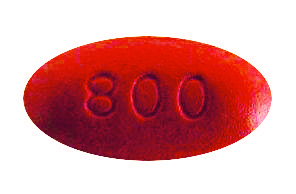darunavir
30 June 2023. Related: ARVs and PrEP, PIs.

800 mg formulation shown
da-RUN-na-veer
- Darunavir is a protease inhibitor that needs to be boosted (by 14 times) with another drug – either ritonavir or cobicistat.
- Dose. Different doses are currently recommended if darunavir is being used in your first combination or if you have used HIV treatment before.
- If this is your first treatment the standard dose is 1 x 800 mg tablets plus either 100 mg ritonavir or 150 mg cobicistat, once daily. Nearly everyone in the UK now uses this dose.
- For people who have used HIV treatment before: 1 x 600 mg tablet plus 100 mg ritonavir, both twice-daily. Very few people in the UK still need to use this dose.
- Darunavir needs to be taken with food. Even with ritonavir boosting, food is needed to boost these levels by another 30%. The EU patient information says that the type of food is not important .
- Side effects: nausea, rash, diarrhoea, lipodystrophy and lipid changes.
- Other notes: when compared to Kaletra, darunavir had lower rates of nausea, diarrhoea and lipid changes.
- This is a sulfa-containing drug, and should only be used with caution in by people with a known sulfa allergy.
Formulations
- Darunavir is now off-patent in the UK. This means can be manufactured by different companies with different brand names.
- The original trade name in Europe was Prezista. It was developed as TMC-114.
- Darunavir plus cobicistat are coformuated in a single pill call Prezcobix.
Further information
The European patient information and detailed Product Information for darunavir are available from this link at the European Medicines Agency (EMA) website. Direct PDF link.
The Patient Information is a simplified summary: what the drug is, why it is used, results from studies and cautions including side effects.
The Product Information is a detailed technical summary that you can access as a PDF file by clicking the ‘Product Information’ tab. It describes more precisely how the drug works and how it is processed by your body. This includes, for example, reported food interaction studies in terms of calories or fat content. It includes more details of the study results and a full list of side effects and drug interactions.
